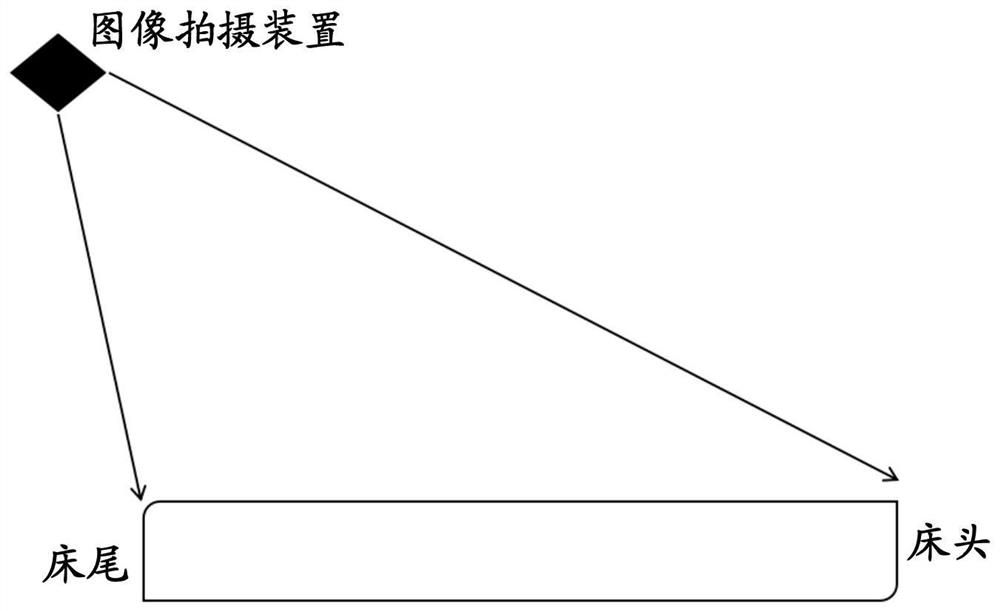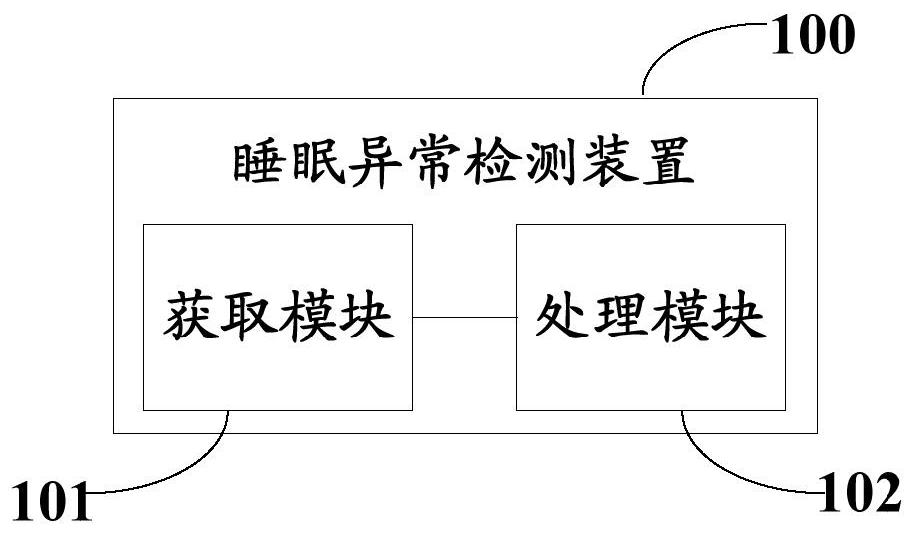Sleep disorder detection method and device, electronic equipment and readable storage medium
An anomaly detection and storage medium technology, applied in the field of image processing, can solve problems such as poor application effect, inability to realize active marking and reminder, and inability to realize active recognition of abnormal state
- Summary
- Abstract
- Description
- Claims
- Application Information
AI Technical Summary
Problems solved by technology
Method used
Image
Examples
Embodiment 1
[0033] see figure 1 as shown, figure 1 A method for detecting abnormal sleep provided in the embodiments of the present application, including:
[0034] S101: Acquiring a currently captured image.
[0035] In the embodiment of the present application, an image capturing device may be installed in a sleeping space such as a bedroom, so that the image capturing device may be used to capture images of the user during sleep.
[0036] Exemplarily, in the embodiment of the present application, the image capturing device may be aimed at the bed used by the user for sleeping. At the same time, the image capturing device can be connected in communication with the back-end processing device, so as to send the captured image to the back-end processing device, so that the back-end processing device can process it according to the solution in the embodiment of the present application.
[0037] It should be understood that, in this embodiment of the present application, the image capture d...
Embodiment 2
[0082] In this embodiment, on the basis of Embodiment 1, a specific anomaly detection process is taken as an example to illustrate the solution of the present application.
[0083] The installation orientation of the image capture device is as follows: figure 2 as shown,
[0084] Step 0, the image capturing device acquires the currently captured image.
[0085] Step 1. Use the key point detection model based on deep learning to detect the key points of the human body in the currently captured image.
[0086] Step 2. When the key points of the human body are not detected, jump to step 0 and re-acquire the currently captured image. When the key points of the human body are detected, go to step 3.
[0087] Step 3. Determine whether the overall deviation between the key points of the human body in the currently captured image and the key points of the human body in the last captured image is greater than a preset first deviation threshold. If yes, go to step 4. If not, skip ...
Embodiment 3
[0093] Based on the same inventive concept, an embodiment of the present application also provides a device for detecting abnormal sleep. see image 3 as shown, image 3 A sleep abnormality detection device 100 corresponding to the method shown in the first embodiment is shown. It should be understood that the specific functions of the abnormal sleep detection device 100 may refer to the above description, and to avoid repetition, the detailed description is appropriately omitted here. The abnormal sleep detection device 100 includes at least one software function module that can be stored in a memory in the form of software or firmware or solidified in the operating system of the abnormal sleep detection device 100 . specifically:
[0094] see image 3 As shown, the abnormal sleep detection device 100 includes: an acquisition module 101 and a processing module 102 . in:
[0095] The acquiring module 101 is configured to acquire the currently captured image;
[0096] Th...
PUM
 Login to View More
Login to View More Abstract
Description
Claims
Application Information
 Login to View More
Login to View More - R&D
- Intellectual Property
- Life Sciences
- Materials
- Tech Scout
- Unparalleled Data Quality
- Higher Quality Content
- 60% Fewer Hallucinations
Browse by: Latest US Patents, China's latest patents, Technical Efficacy Thesaurus, Application Domain, Technology Topic, Popular Technical Reports.
© 2025 PatSnap. All rights reserved.Legal|Privacy policy|Modern Slavery Act Transparency Statement|Sitemap|About US| Contact US: help@patsnap.com



